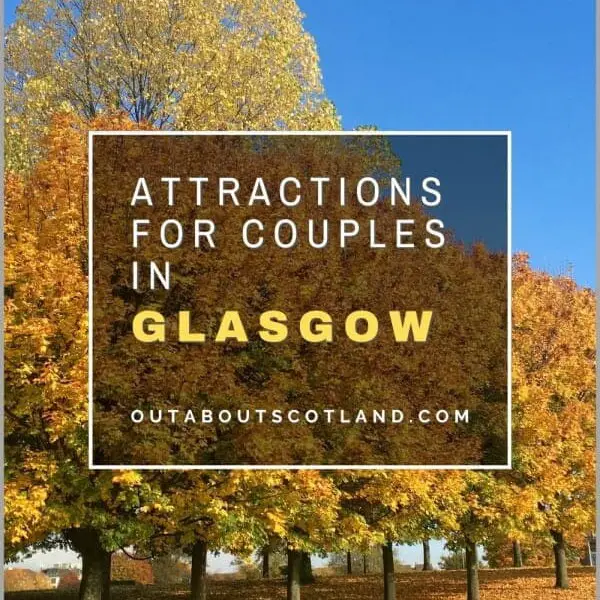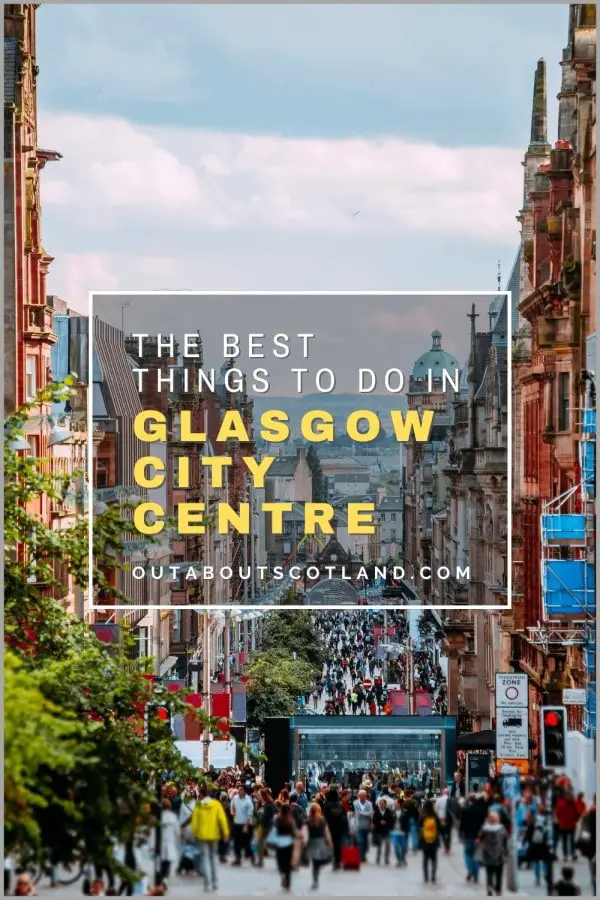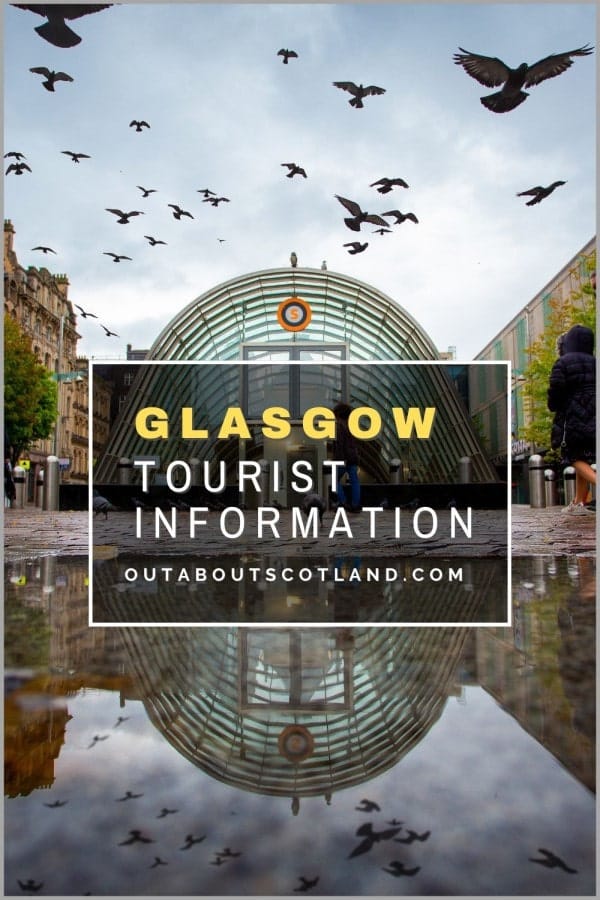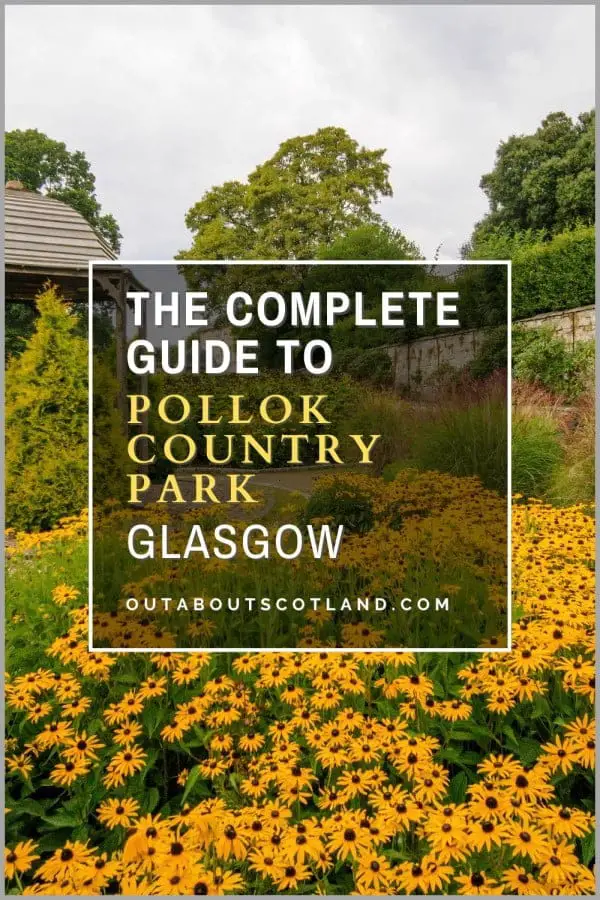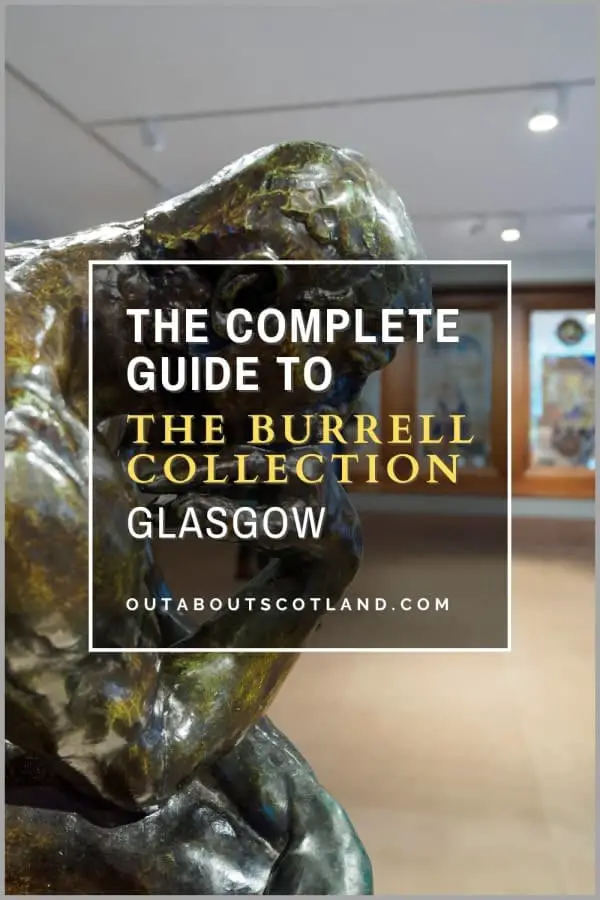There’s a lot to like about Glasgow. Not only is it Scotland’s largest city, but it’s also home to a number of attractions that are ideal for couples, including world-class art galleries and museums, as well as some of the best bars and restaurants in Scotland.
There are lots of historic sites to explore, and almost all of the city’s top attractions are completely free to enter. Discover the best things to do in Glasgow for couples with this article, which features overviews of the top attractions along with some useful visiting tips that will help you make the most of your time in the city.
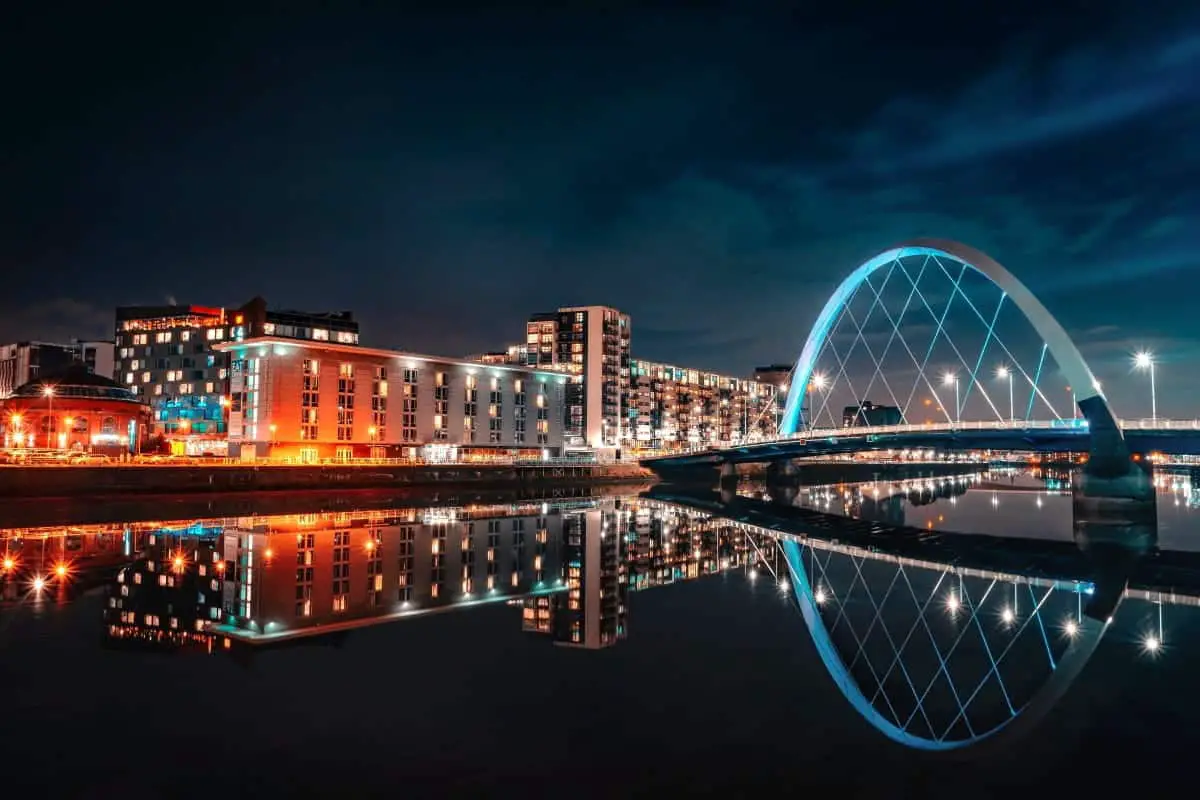
Tours of Glasgow for Couples
Glasgow is one of the best places in Scotland for couples to visit. There are fantastic attractions around every corner (and many of them are free), loads of historic buildings to explore, superb parks to wander around, and Scotland’s finest collection of pubs and restaurants to enjoy at night.
While it’s certainly possible to head off in any direction and hope for the best, it makes more sense to leave the planning to a professional tour guide who can take you to all the main attractions as well as the hidden away gems that only the locals know about.
There are dozens of tour operators ready to take visitors around Glasgow, but the best ones can be found on Get Your Guide, which offers free cancellation for all bookings and features only the very best activities and tours.
If you’re visiting Glasgow but aren’t sure where to go first, I recommend booking a ticket for the hop-on, hop-off bus, which visits all of the main attractions in the city, including Kelvingrove Museum and Glasgow Cathedral.
Map of Glasgow Attractions
Glasgow Botanic Gardens
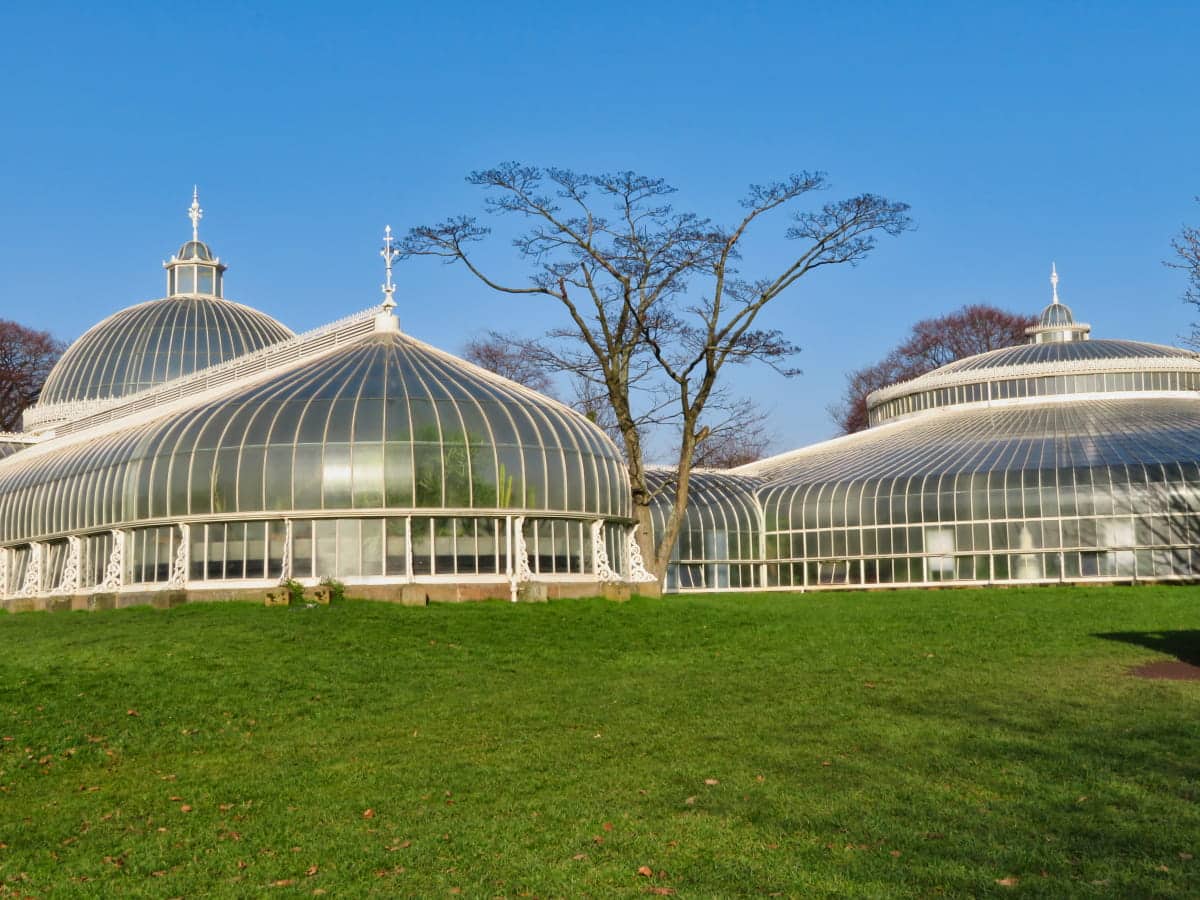
Out About Scotland Complete Guide to Glasgow Botanic Gardens
The Glasgow Botanic Gardens are located on Great Western Road, one mile north of Kelvingrove Museum. Entry is free, and visitors can explore flower beds, arboretums, and greenhouses on a network of paths that run through the 20 hectares of landscaped grounds.
There are over 12,000 different plant specimens to view in Glasgow Botanic Gardens, but perhaps the most impressive is the national collection of ferns in the stunning Victorian-era Kibble Palace. This wrought iron and glass masterpiece wowed crowds when it was unveiled in 1873, and it still manages to captivate visitors to this day.
Other highlights are the modern glasshouse that contains a tropical rainforest, and the arboretum that spreads out from the banks of the River Kelvin.
You’ll also find an excellent café inside the restored curator’s cottage which serves delicious home-baked treats – perfect for replenishing energy levels before crossing the bridge at the rear of the gardens and going for a walk on the scenic Kelvin Walkway.
Glasgow Cathedral
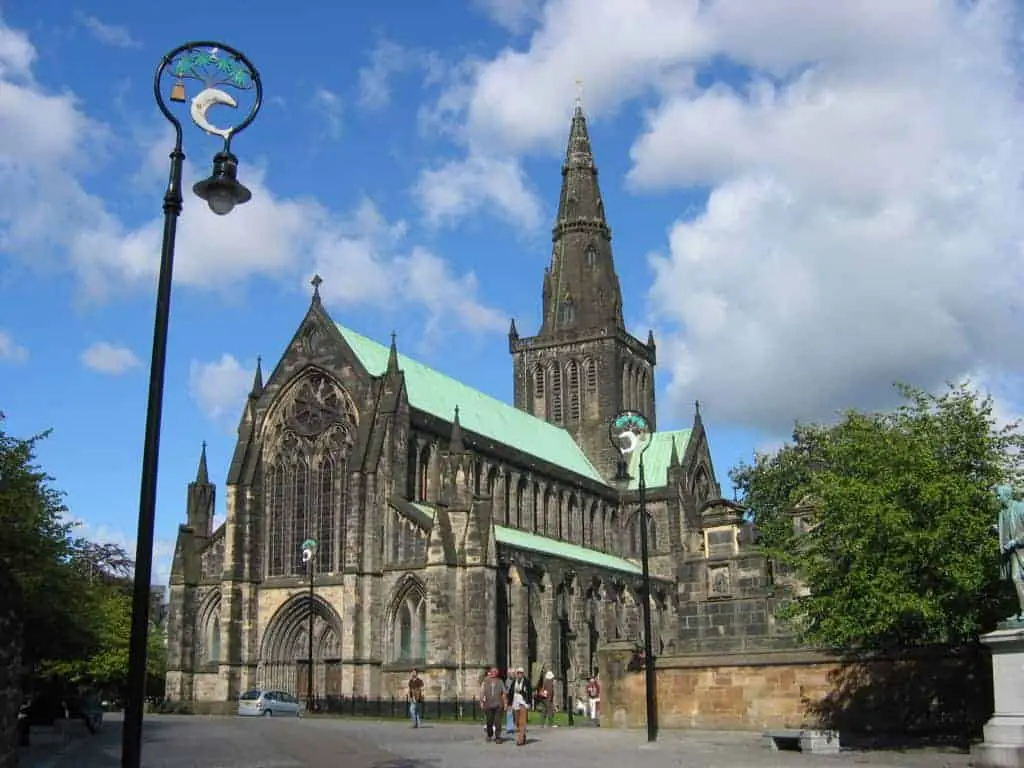
Out About Scotland Complete Guide to Glasgow Cathedral
Without the Cathedral, Glasgow would be a very different place as it’s the original site where St. Kentigern built his chapel in the 6th century, around which the city grew and prospered.
The cathedral is a fascinating place to visit, and it does a great job of assisting curious visitors thanks to Historic Environment Scotland, which has installed information panels that explain the story of St. Kentigern and how his chapel eventually became the awe-inspiring cathedral.
The nave, in particular, is an amazing space, not quite as impressive as York Minster but not too far off, and it’s extraordinarily atmospheric, especially in the lower crypt where the remains of St. Kentigern are laid to rest.
There’s no fee to enter Glasgow Cathedral, so if you combine it with the nearby Necropolis and St. Mungo Museum, it’s possible to have a very interesting afternoon without spending a penny.
Glasgow Green & The People’s Palace
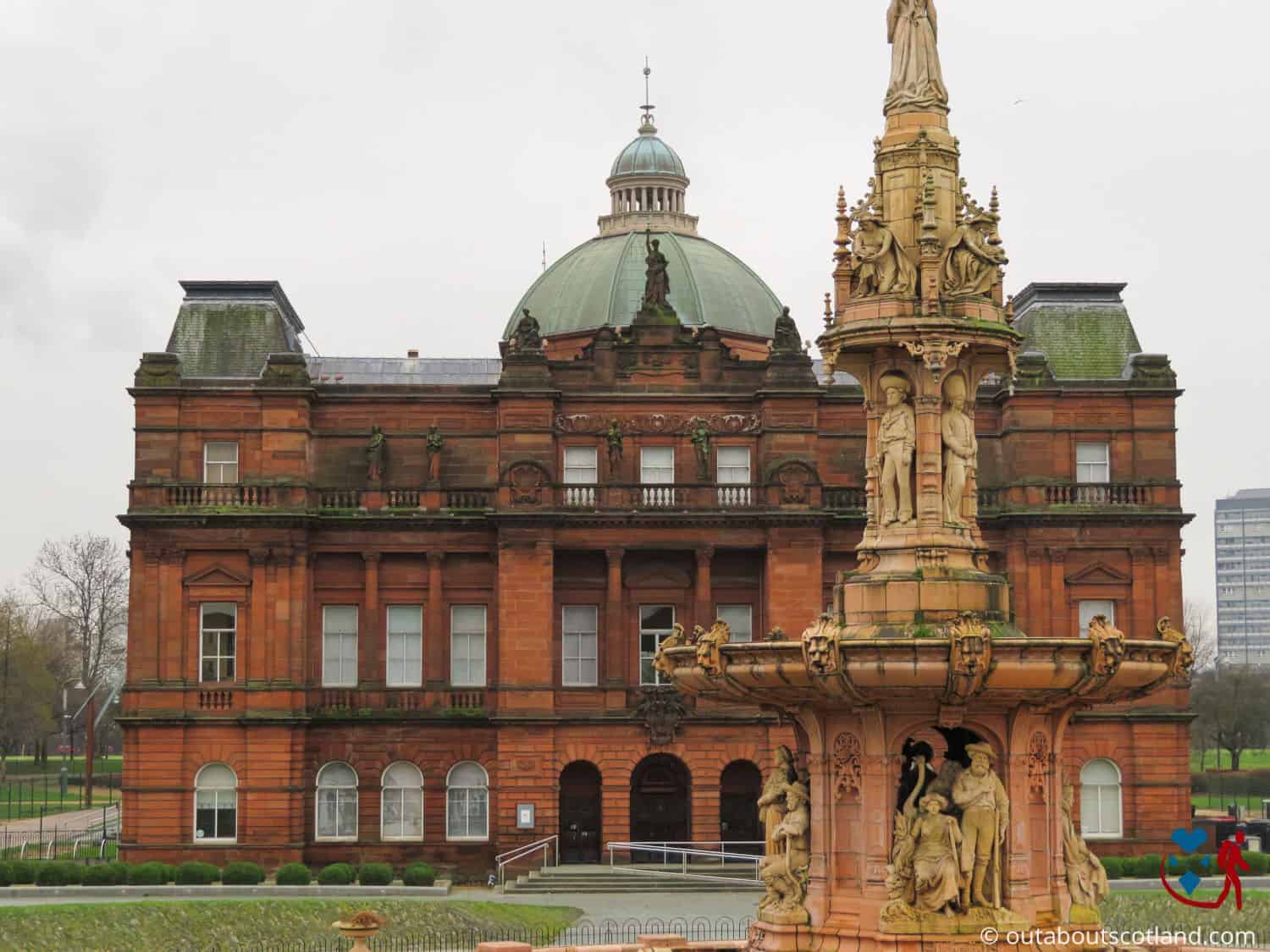
Out About Scotland Complete Guide to Glasgow Green
Glasgow Green is a large 55-acre park situated in the heart of Glasgow. Due to its location it’s one of the most-used green spaces in the city, but it has other accolades including being the oldest park in Glasgow (King James designated it a park in 1450) and the city’s main event space.
Two major events that draw tens of thousands of people each year are the TRNSMT Music Festival and the World Pipe Band Championships, but even these don’t draw as many people as the star of the show – The People’s Palace.
This ornate, red-bricked building opened in 1898 as a social history museum and it still serves that purpose today with a large collection of artefacts that tell the story of Glasgow, its people and the shipbuilding industry that transformed it into one of the great industrial powerhouses of Britain.
Adjacent to the People’s Palace is the Winter Garden, which is an enormous greenhouse along the lines of Kibble Palace in Glasgow Botanic Gardens. Inside, you’ll find a collection of exotic plants next to a café, exhibitions, and a shop, and as with most other attractions in this city, entry is completely free.
Kelvingrove Museum
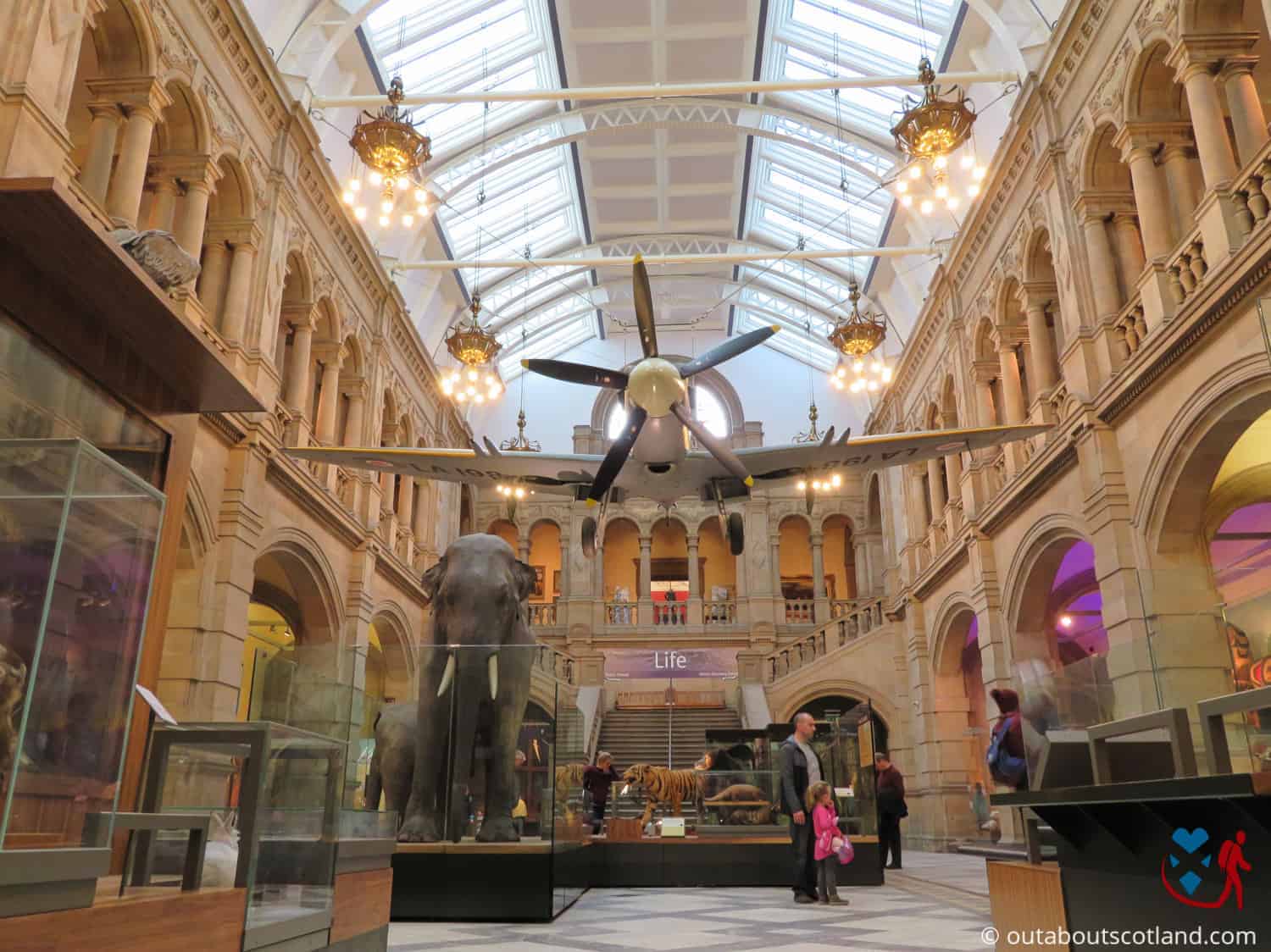
Out About Scotland Complete Guide to Kelvingrove Museum
Kelvingrove Art Gallery and Museum barely needs an introduction as it’s one of the most-visited attractions in Scotland. This huge art gallery and museum is located on the southwest edge of the 84-acre Kelvingrove Park, meaning it’s within walking distance of lots of other attractions, including the Riverside Museum, The Tall Ship and the Hunterian Museum, which are all just a 15-minute walk away.
Stepping through the doors onto the marble floor of the great hall is quite an experience as there are exhibitions and displays crammed into every nook and cranny, and in fact, Kelvingrove Museum is home to an astounding 9,000 artefacts and paintings.
Visitors will enjoy the Life and Expression galleries, which feature displays from the fields of nature, history, and science, while art lovers can marvel at the fine art galleries that include masterpieces by Rembrandt, Salvador Dalí, and Renoir. In total, there are 22 galleries in Kelvingrove Museum, along with a cafe and a gift shop.
The Glasgow Necropolis
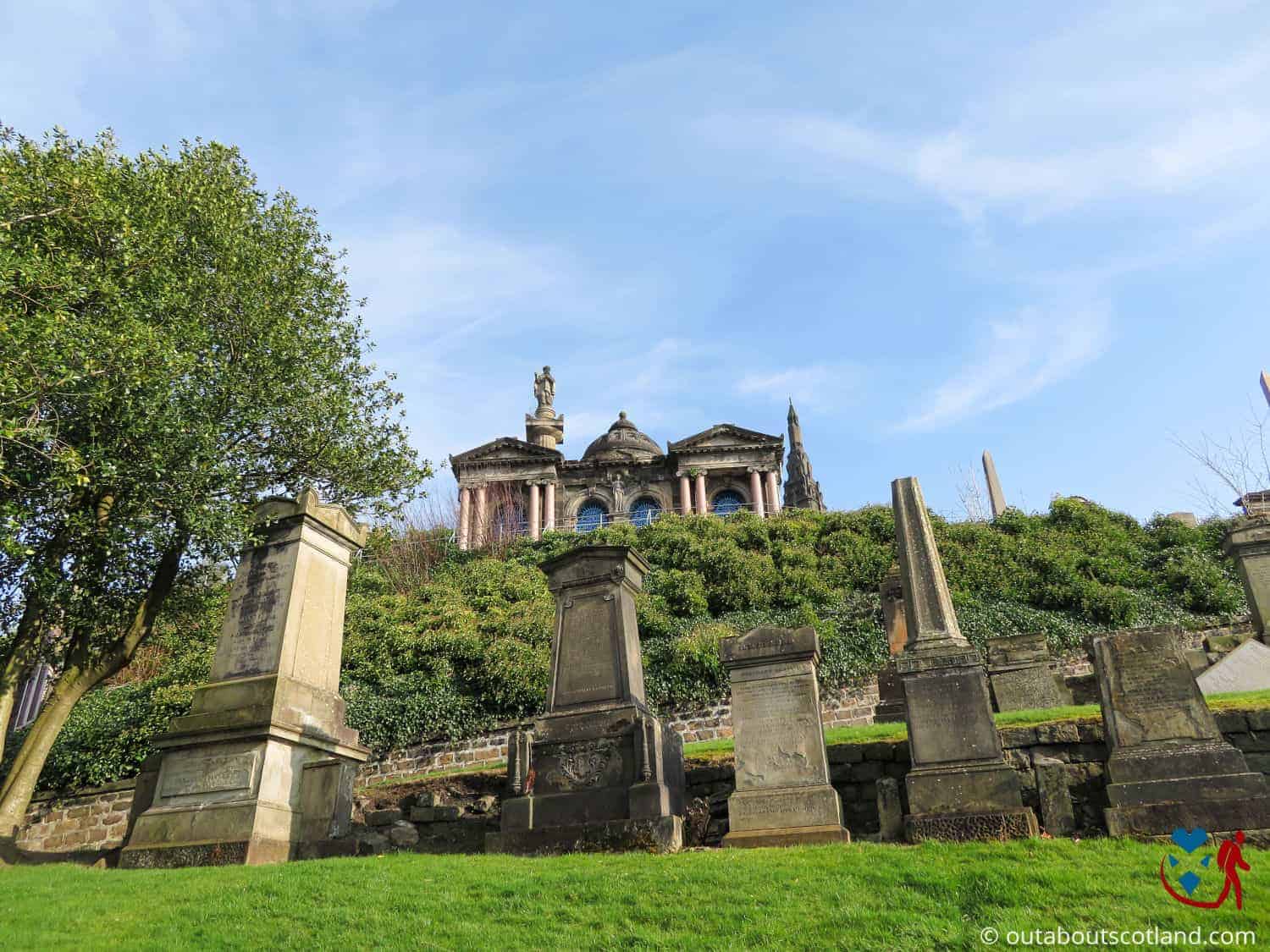
Out About Scotland Complete Guide to The Glasgow Necropolis
This is one of the more unusual attractions in Glasgow but it’s no less popular for it. The Necropolis is a historic graveyard situated on a hill overlooking the cathedral, where more than 50,000 burial stones cover 37 acres.
Many of the decorative tombs and headstones date from Victorian times, and the majority are quite unlike any you’ll see in any other graveyard in Scotland.
The Necropolis’s unique design by a landscape gardener rather than an architect gives it a parkland-like feel as you navigate its maze of winding pathways. The mix of tombstones, woodland, and carpets of wildflowers all add to the atmosphere, so it’s not surprising the Necropolis attracts so many tourists, especially in the summer.
You’ll get superb views of the city skyline by climbing to the foot of the John Knox Monument, but if you’d rather learn about the history of the iconic graveyard you can join a guided walking tour organized by The Friends of Glasgow Necropolis.
The University of Glasgow
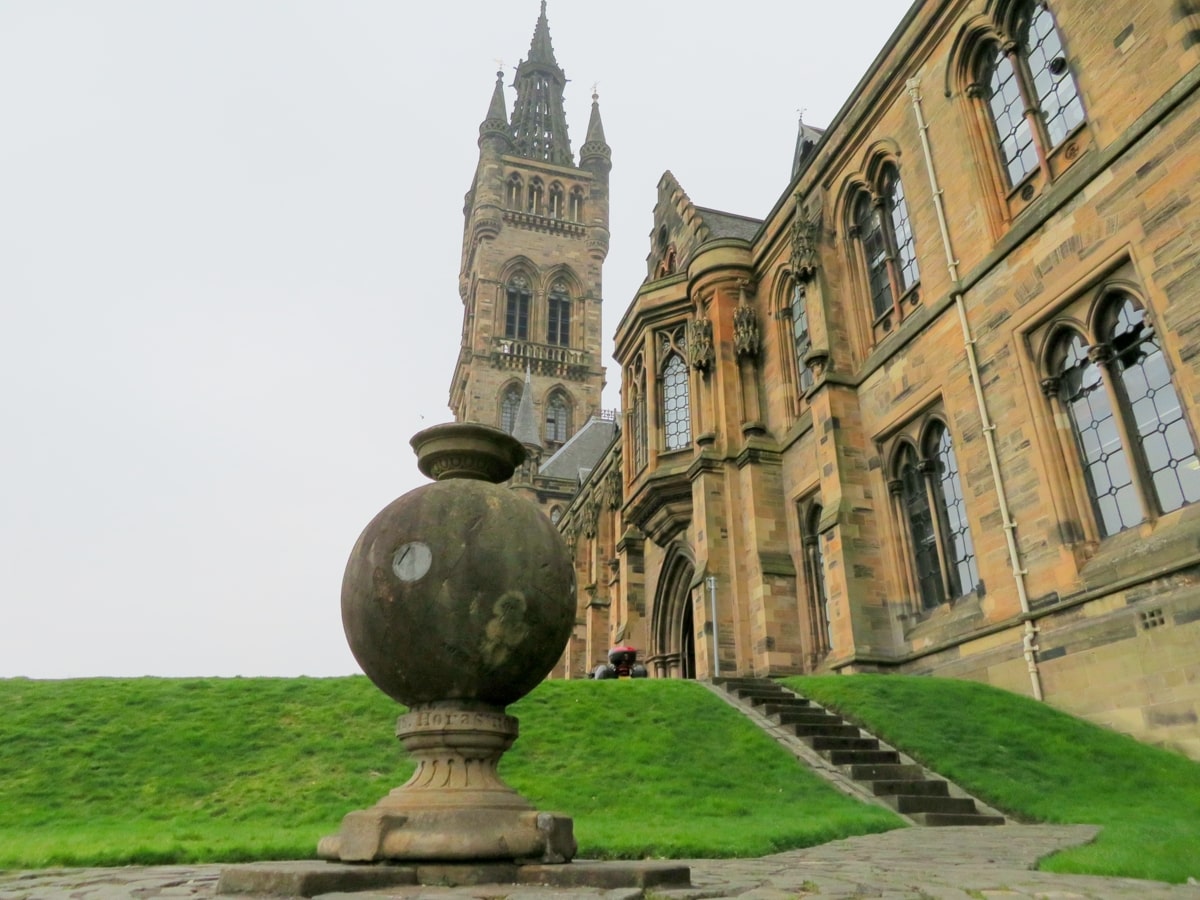
Out About Scotland Complete Guide to The University of Glasgow
This might not be the first place that springs to mind when looking for tourist attractions in Glasgow, but the city university definitely deserves a place on your sightseeing itinerary.
As one of the oldest universities in the world (having been founded in 1451), the University of Glasgow is an extraordinary place, not only for its size, which has grown steadily over the course of hundreds of years, but also for its Gothic architecture, which is as close to Harry Potter’s Hogwarts as you’re ever likely to find in real life.
You’re free to roam around the exterior at your leisure, but be aware that the university is a working building, so many areas are off-limits to tourists. That being said, there are a few must-sees in the university, including the Cloisters underneath the Gilbert Scott building, Bute Hall, and the Hunterian Museum.
The Hunterian Museum is worth the journey on its own, and in fact, I’d say it’s one of the top attractions in the city. The museum features one of the finest collections of historic artefacts in Scotland, sourced from the fields of archaeology, palaeontology, medicine, and zoology.
It might not be as big as Kelvingrove but it’s just as interesting and has far fewer crowds, plus – like all the best attractions in Glasgow – it’s completely free to get in.

More Attractions in Glasgow
| Kelvingrove Art Gallery and Museum | Glasgow Necropolis | The Tall Ship |
| Riverside Museum | George Square | Pollok House |
| Glasgow Cathedral | Hunterian Art Gallery | Bellahouston Park |
| Gallery of Modern Art | Kelvingrove Park | St. Mungo Museum |
| People’s Palace | Glasgow Botanic Gardens | Strathclyde Country Park |
| Glasgow Science Centre | Glasgow Green | Glasgow Science Centre Tower |
| The Lighthouse | Pollok Country Park | Mugdock Country Park |
Getting Around Glasgow
Glasgow is built on a grid system, which makes it very easy to navigate either by public transport or on foot. There are extensive bus networks and an efficient subway system which both run regular transport connections to all major districts within the city.
Glasgow can be navigated on foot via the many tourist information signs on the streets, while taxis can be hailed from the roadside if your feet are in need of a rest after a busy day of sightseeing.
In my opinion, the best way to explore the city is on foot, as Glasgow City Council has released a Glasgow Walking iPhone app that makes it easy to find your way to the main tourist attractions. Alternatively, pick up a free paper map from the Glasgow iCentre (address: 156a/158 Buchanan Street, G1 2LL).
Glasgow’s Subway
Glasgow is unusual in Scotland as it’s the only city that has its own subway system. Although not the cheapest option, the subway is the easiest way to get to the city centre and the west end.
Trains run every 5 minutes at peak times and take just 24 minutes to complete a circuit of the 15 stations. You can either buy a single ticket or a Subway Smartcard which offers the best fare prices and allows you to top up as you go. The Glasgow Subway map is a great way to find your way around the stations.
If you want to find out information about the various travel options in the Glasgow and Strathclyde areas, check out the SPT Travel Centres in the city as they provide all the information you need during your visit. Meanwhile, Traveline Scotland covers public transport across the rest of Scotland if you intend to travel further afield.
Frequently Asked Questions
Where is Glasgow?
Glasgow is located in the western lowlands of Scotland at roughly the same latitude as Edinburgh. It is a port city and it’s famous for its shipbuilding industry centred around the River Clyde.
Glasgow is also the largest city in Scotland, and it has the largest population.
Distances from other UK cities:
Glasgow to Edinburgh: 39 miles (62.76 km).
Glasgow to London: 346 miles (556.83 km).
Glasgow to Birmingham: 253 miles (407.16 km).
Glasgow to Manchester: 184 miles (296.12 km).
Glasgow to Cardiff: 306 miles (492.46 km).
What is the oldest pub in Glasgow?
Glasgow is well known for its traditional pubs, some of which are hundreds of years old. The oldest pub in Glasgow is believed to be The Saracen Head in Gallowgate. The pub has moved location several times and it is recorded that there have been four Saracen Head pubs in Gallowgate since 1755.
The previous contender for Glasgow’s oldest pub was The Old College Bar which was said to date to 1515 but was recently discovered to have actually been built in 1810.
What is there to do in Glasgow?
Glasgow is one of the top cities in Britain for attractions, many of which are council-run and have no entrance fee. Top-rated things to do include:
Parks: Pollock Country Park, Bellahouston Park, Kelvingrove Park, Glasgow Green, Queen’s Park.
Museums: Kelvingrove Museum, Riverside Museum, St. Mungo Museum, Scottish Football Museum.
Galleries: Kelvingrove Art Gallery, Hunterian Art Gallery, People’s Palace, Gallery of Modern Art.
Historic buildings: Glasgow Cathedral, the University of Glasgow, Pollock House.
Attractions: Glasgow Botanic Garden, Glasgow Science Centre, The Tall Ship, The Necropolis.
How old is Glasgow?
Glasgow is thought to be at least 1,500 years old.
It is known there was a settlement on the River Clyde where modern Glasgow is located in 550 BC, but the settlement did not begin to develop into a city until St. Kentigern established the 6th-century chapel that would later become Glasgow Cathedral.

